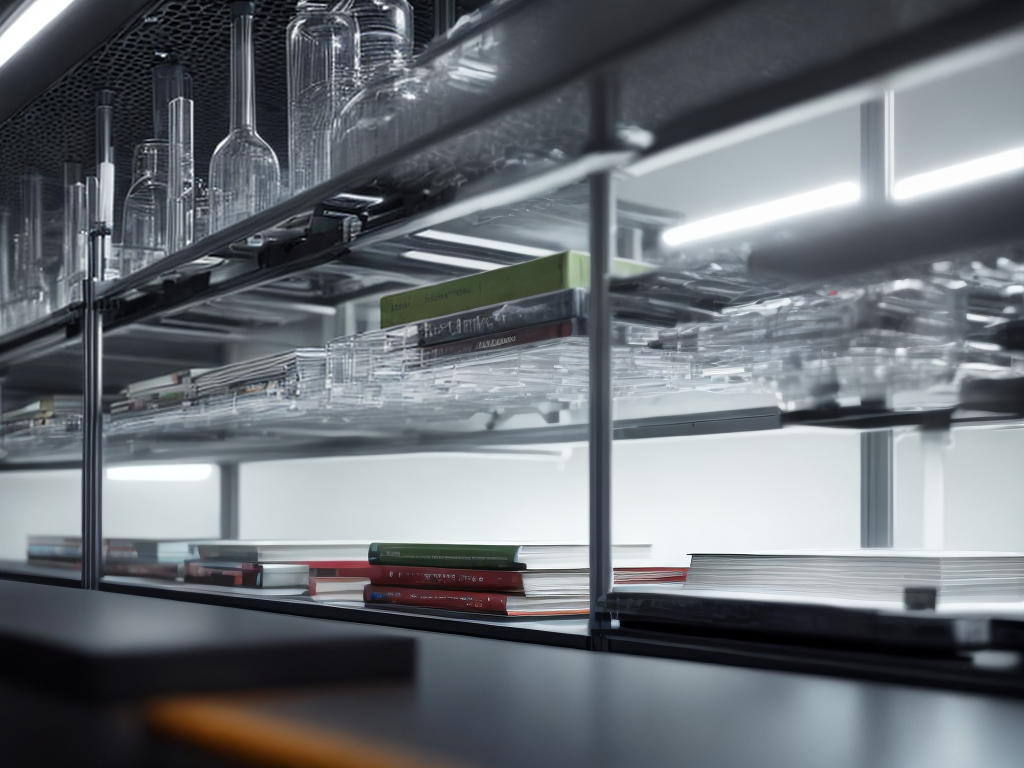Introduction to Thermal Sensing in Industrial Applications
Thermal sensing is a critical technology for monitoring temperature across a wide range of industrial processes and applications. From manufacturing and energy production to transportation and food processing, accurate temperature measurement and control are vital for efficiency, safety, and product quality.
Industrial heaters are essential components across industries for heating, drying, curing, and other thermal processes. Improving the efficiency and control of these heaters through advanced thermal sensing delivers significant energy savings and reduces environmental impact.
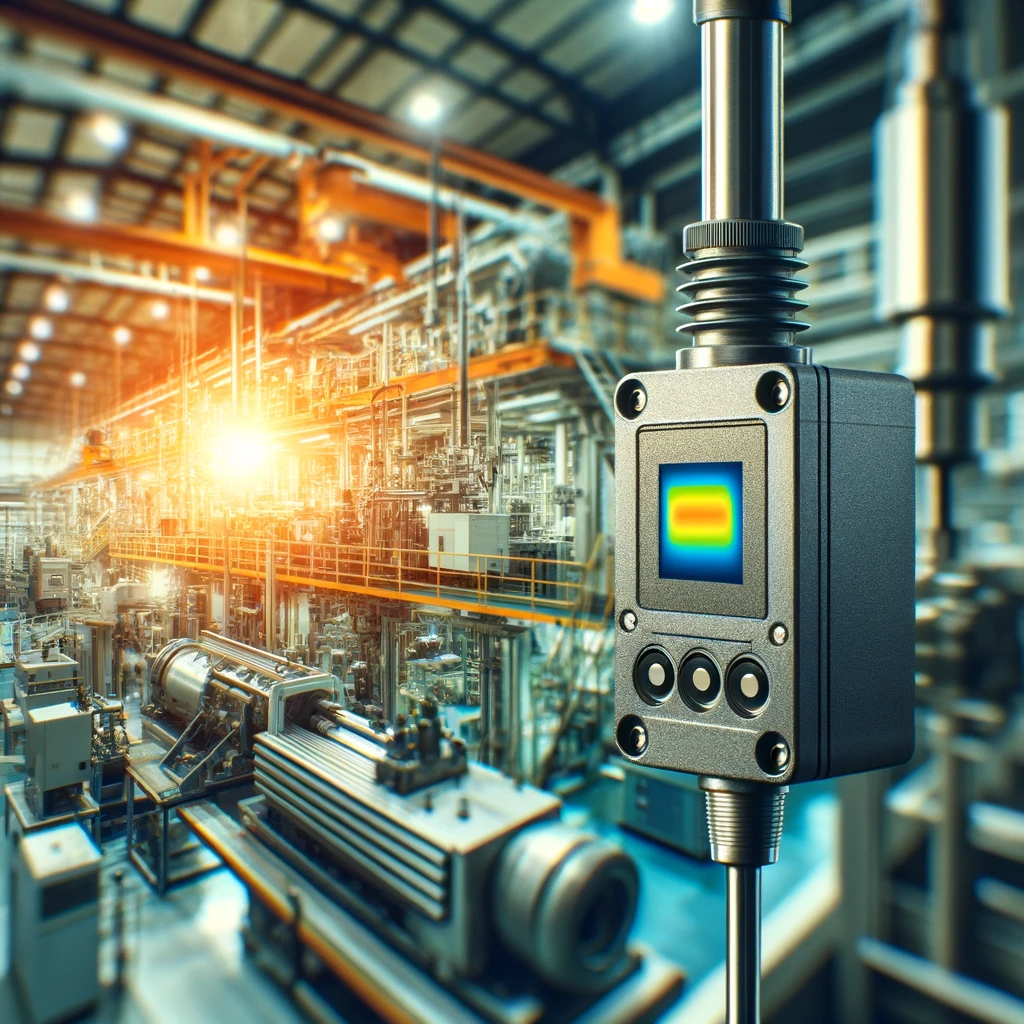
This article provides a comprehensive overview of innovations in thermal sensing focused on enhancing heater efficiency and control in industrial settings. I explore the historical development, basic principles, and key components of thermal sensor technologies. The article covers emerging techniques, the integration of thermal sensing with automation and data systems, and real-world applications across sectors.
Thermal sensing is rapidly evolving, driven by the Internet of Things (IoT), artificial intelligence (AI), and new materials. This convergence enables smarter heating systems with unprecedented monitoring, precision, and responsiveness. For engineering leaders and technology decision-makers, understanding these advancements is essential for leveraging thermal sensing to optimize processes, reduce costs, and strengthen competitiveness.
Historical Overview of Thermal Sensing Technology
The ability to accurately measure temperature is critical across science and industry. The history of thermal sensing illustrates how incremental innovations in materials, electronics, and manufacturing have yielded increasingly sophisticated temperature monitoring capabilities.
Early thermometers utilizing the expansion of solids and liquids like mercury date back to the 1600s. These primitive devices laid the foundation for standardized temperature scales but lacked precision. It wasn’t until the mid-1800s that breakthroughs in thermoelectric materials enabled more accurate electronic thermometers.
The thermocouple, invented in 1821, produces a voltage from the temperature differential between two dissimilar metal wires. This voltage can be measured to determine temperature. Various metals yield different output voltages, enabling thermocouples to measure a wide temperature range.

Another milestone came in 1930 with the introduction of the thermistor – a resistor made from semiconductor materials whose resistance changes significantly with temperature fluctuations. Unlike thermocouples, thermistors measure absolute temperature at a point.
Integrated circuits enabled the development of precise, affordable integrated circuit temperature sensors in the 1970s. By the 1990s, micromachining techniques allowed the emergence of microelectromechanical systems (MEMS) for thermal sensing.
Today, a range of thermal sensing technologies provide solutions tailored to industrial environments, leveraging emerging materials and techniques. The advent of wireless sensing, the IoT, and AI points to a new era of smarter, more responsive temperature monitoring and control.
Basic Principles of Thermal Sensing
Thermal sensing techniques all aim to translate temperature data into actionable information, but different approaches have distinct strengths and limitations. Understanding the operating principles helps select optimal sensors for given applications.
Most common industrial thermal sensors rely on temperature-dependent changes in the electrical properties of materials:
- Thermocouples use junctions of dissimilar metals to generate a voltage proportional to temperature. Different metals provide sensitivity over different ranges. Thermocouples are inexpensive and highly versatile.
- Thermistors are made from semiconductor materials that exhibit a strong correlation between temperature and electrical resistance. They provide precise temperature measurements but over a limited range.
- IC sensors embed microscale temperature sensing elements in an integrated circuit package. Mass manufacturing keeps costs low. On-board processing gives highly accurate digital output.
- Infrared (IR) detectors measure emitted IR radiation, allowing non-contact temperature measurement. Both point detectors and thermal imaging cameras are available.
- Bimetallic strips utilize the different thermal expansion rates of bonded metals. The bending of the strip indicates the temperature for simple mechanical thermostats.
- Fiber optic sensors relay temperature data through modulated light signals in optical fibers. They provide electromagnetic noise immunity and remote sensing capabilities.
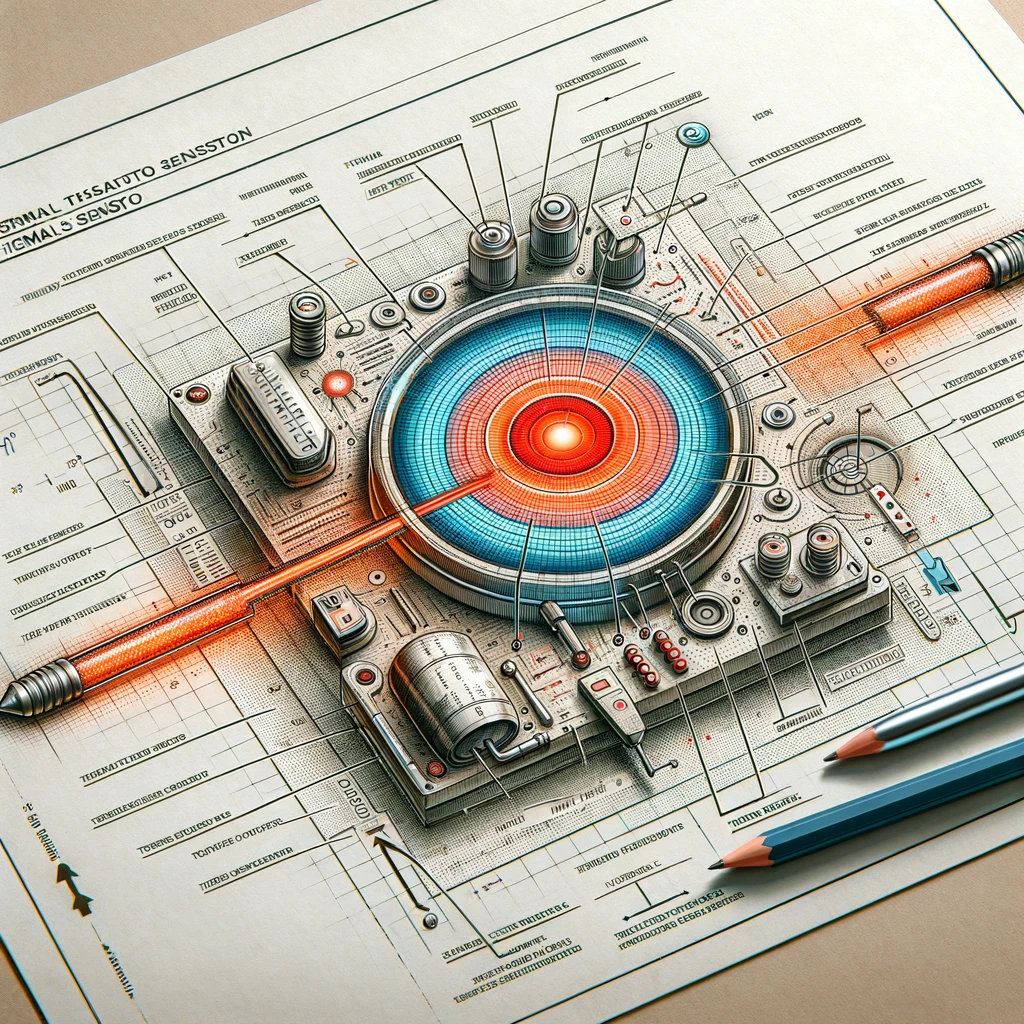
Understanding performance tradeoffs allows selecting the optimal sensor technology for each application based on variables like temperature range, accuracy needs, electrical outputs, durability, speed of response, size constraints, and cost.
The Evolution of Heater Efficiency Technologies
Industrial heating consumes extensive energy across manufacturing, chemical processing, food production, and more. Optimizing the efficiency and control of heaters using thermal sensors delivers major efficiency gains and cost savings.

Historically, basic thermostats and rudimentary PID control systems provided only limited temperature regulation for industrial heaters. Lacking precision, these outdated controls result in energy waste through overheating and poor setpoint matching.
Modern thermal sensors facilitate substantial improvements in heater efficiency:
- Advanced fiber optic sensors monitor temperature gradients across furnaces or ovens, enabling pinpoint optimization of the heating process.
- Wireless sensors give new flexibility in retrofitting existing heaters without wiring. Remote monitoring and control slash downtime costs.
- Rapid-response sensors provide temperature feedback within milliseconds rather than seconds or minutes, allowing for tighter regulation.
- MEMS sensors embed heating elements and thermal sensors together, achieving highly responsive in situ control of heating.
- IoT-enabled controls adjust heater setpoints dynamically based on production schedules, environmental conditions, and other data for context-aware efficiency.
As thermal sensing has become more sophisticated, it has enabled transformative gains in the precision, responsiveness, and automation of industrial heating processes. Continued progress will rely on the convergence of sensing, connectivity, and data analytics.
Key Components of Thermal Sensors
While thermal sensor technologies differ significantly, some key components appear across many sensor types:
- The sensor element directly interacts with the heat source, converting temperature changes into electrical signals. Choices include thermocouples, thermistors, IR detectors, fiber optic cables, and more.
- Signal conditioning circuitry processes the sensor output into standardized, noise-reduced voltage or current signals compatible with instrumentation. Components include amplifiers, filters, linearization, and analog-to-digital conversion.
- The housing encapsulates the sensor and circuitry, protecting components. Housings must withstand industrial temperatures, moisture, vibration, and corrosion over years of use. Stainless steel and high-grade plastics are common.
- Connectors and cables relay the sensor signals to control systems and data loggers. Reliable, industrial-grade connectors resist moisture ingress and chemical exposure. Twisted or coaxial cables minimize interference. Wireless sensors transmit signals without cabling.
- The interface provides power to the sensor and routes signal to relevant monitoring and control equipment. Digital networks, analog I/O modules, and wireless protocols enable integration.
The robust design of these elements ensures accurate, reliable temperature data and long service life for industrial thermal sensors in harsh plant environments.
Types of Thermal Sensors in Industry
Industrial facilities utilize a diverse array of thermal sensor technologies matched to distinct applications and environments across the production process:
- Thermocouples measure furnace, boiler, and oven temperatures up to 2300°C. Durability and low cost make them a workhorse for general purpose, high range measurements.
- RTDs (resistance temperature detectors) provide stability and repeatability down to 0.1°C for precision monitoring in pharmaceutical, biotech, and food processing.
- Thermistors give rapid response for temperature control in plastics extrusion, semiconductor fabrication, and automotive systems with their sensitivity at lower ranges.
- Wireless sensors remotely monitor bearings, motors, and heaters, eliminating costly cable runs and enabling temporary instrumentation.
- Fiber optic sensors withstand harsh environments like gas turbines, rocket engines, and nuclear reactors that would damage electrical sensors.
- Infrared imagers find hot spots in furnace refractory linings, help aim lasers, and provide non-contact scanning for R&D and QA.
- MEMS microsensors are embedded in circuit boards and machinery for real-time, closed-loop temperature control where space is limited.
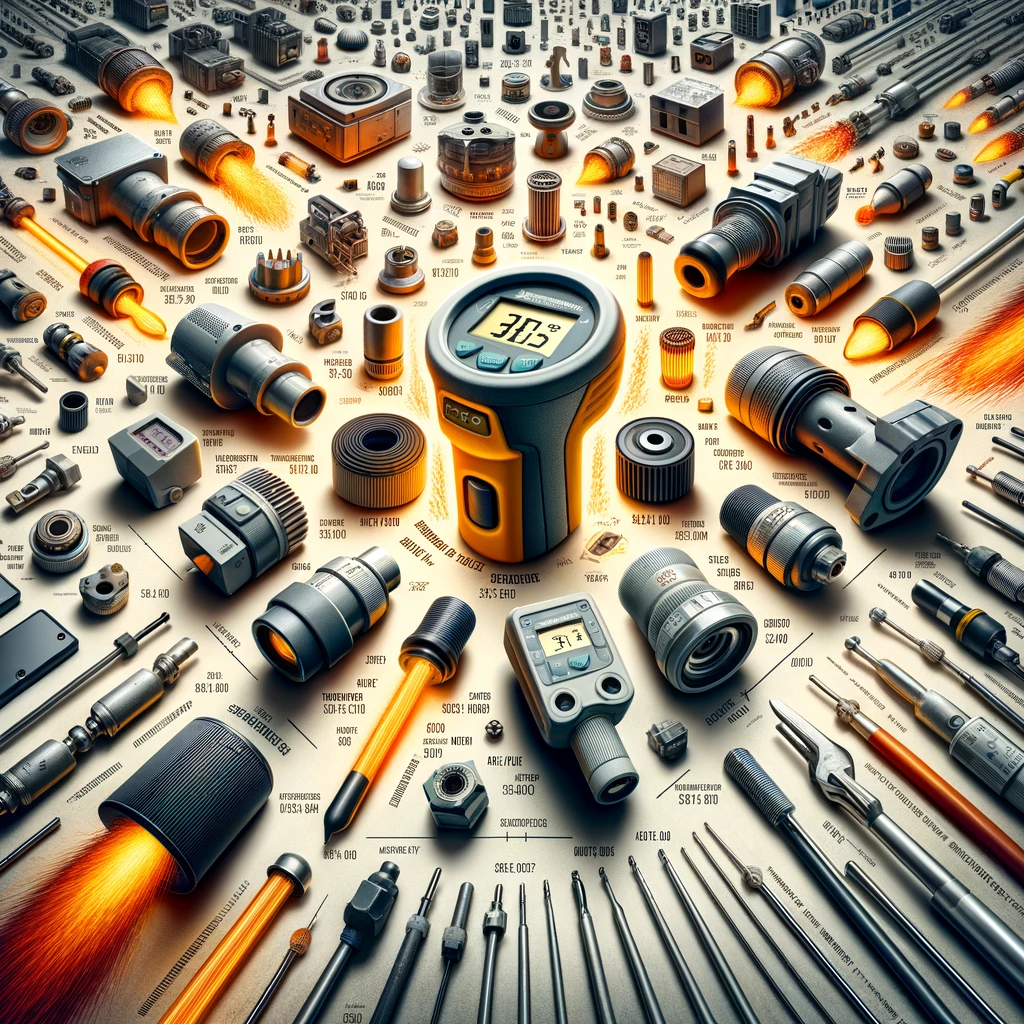
Continuing innovation expands the diversity and capabilities of available thermal sensors for an ever-growing range of industrial settings.
Understanding Heater Control Mechanisms
Optimizing industrial heater efficiency requires both precision temperature measurement and responsive, intelligent control mechanisms. Here are key elements of modern heater control systems:
- Sensors like thermocouples provide temperature input with accuracy and speed to enable dynamic control adjustments. Fiber optic sensors monitor gradients across large heating zones.
- Controllers compare sensor feedback to setpoints and calculate required control actions like turning heating elements off and on. Advanced PID algorithms minimize overshoot and oscillations.
- Actuators like solenoids or solid-state relays physically switch heating elements in response to controller outputs for closed-loop control. High current ratings and durability enable rapid cycling.
- User interfaces allow operators to adjust setpoints, create heating profiles, monitor status, and configure control parameters. Touchscreens streamline data visualization.
- Data networking connects dispersed sensors and heating zones with controllers and data logging software for centralized, coordinated control and data storage.
- Predictive algorithms leverage machine learning on historical data to forecast and adaptively optimize heating needs for improved efficiency.

Integrating precise thermal sensing with networked, adaptive control systems maximizes efficiency in industrial heating processes while maintaining product quality and uniformity.
Innovations in Thermal Sensing Materials
Cutting-edge materials science is driving new approaches to thermal sensing that deliver unprecedented performance and capabilities:
- Graphene – Atomically thin graphene allows incredibly rapid, sensitive measurements of temperature fluctuations. Graphene sensors also have outstanding mechanical strength and flexibility.
- Quantum dots – These nanocrystals alter electronic behavior predictably with temperature, enabling incredibly precise photometric temperature measurement.
- Gallium nitride (GaN) – GaN high electron mobility transistors (HEMTs) enable sensitive, low-power integrated circuit temperature sensors operable to 300°C.
- Fiber Bragg gratings – Adding these structures to fiber optic cables filters out specific wavelengths of laser light based on temperature-induced shifts, enabling distributed sensing.
- Metamaterials – Complete customization of thermal expansion properties allows metamaterials to deliver superior sensitivity and range in bimetallic thermostats.
- Thermoelectrics – Heavily doped semiconductor thermocouples scavenge waste heat to generate electricity, eliminating sensor power requirements.

Ongoing materials science breakthroughs will provide the foundation for the next generation of high-performance, smart thermal sensors for industries of the future.
The Role of IoT in Thermal Sensing
The Internet of Things (IoT) is transforming industrial thermal sensing by enabling intelligent, networked monitoring and control:
- Connectivity – Sensors communicate temperature data seamlessly to central controllers and cloud platforms via wired and wireless networking.
- Distributed control – Web connectivity allows remote monitoring and control of heaters and sensors from any location.
- Data utilization – Vast amounts of temperature data are mined using analytics and machine learning algorithms to optimize efficiency.
- Automated alerts – IoT systems automatically generate notifications when sensors detect threshold violations, prompting preventive action.
- Interoperability – Open protocols like OPC UA allow adding and combining data from diverse sensor types and vendors into unified views.
- Digital twin integration – Sensor data helps construct dynamic digital twins of equipment and processes for advanced simulation and control.
- Predictive maintenance – By identifying rising temperatures, IoT sensor networks pinpoint impending heater failures and trigger proactive repairs.

The IoT represents a seismic shift for thermal sensing, providing the connectivity, bandwidth, and intelligence to transition from isolated measurements to optimized, predictive thermal management.
Case Study: Thermal Sensing in Manufacturing
Thermal sensing delivers major efficiency and quality gains across manufacturing applications, from discrete sensors to networked monitoring:
- Machine builders install compact thermocouples inside motor windings and bearings for condition monitoring and predictive maintenance, avoiding failures.
- Plastics manufacturers use fast-response thermistors and advanced PIDs to minimize temperature deviations in injection molding and extrusion processes.
- Digital thermal imaging cameras help laser welders ensure proper bead placement by detecting heat patterns in real time.
- Glass furnace operators utilize fiber optic temperature arrays to profile gradients and optimize heating control setpoints to improve uniformity and output.
- Automakers apply wireless thermocouples and accelerometers on dies to collect massive datasets for developing smarter, optimized stamping processes.
- Pharmaceutical plants rely on ultra-precise RTDs and data loggers to validate strict compliance with freeze drying equipment protocols.

These examples demonstrate the breadth of thermal sensing use cases, driving quality, efficiency, and performance across diverse manufacturing sectors.
Thermal Sensors and Energy Efficiency
Thermal sensors deliver major energy savings in industrial facilities by enabling data-driven optimization of heating processes:
- Reduced overheating – Precise control matches heating closely to target temperatures, avoiding energy waste.
- Optimized heating time – Real-time monitoring allows heating duration to be minimized.
- Faster heating response – Rapid sensor feedback enables tighter regulation of heating ramp rates.
- Lower standing pilot usage – Demand-based heating replaces standing pilots when not needed.
- Predictive, adaptive control – Modeling of thermal behavior allows forecasting and preheating to precise temperatures.
- Early fault detection – Identification of heating issues like fouled burners or failing elements prevents energy waste.
- Verification of improvements – Energy metering validates thermal sensing enhancements and guides additional efficiency efforts.

Advanced thermal sensing delivers actionable data for optimizing industrial heating processes, resulting in significant energy savings and fast payback of sensor investments.
Advanced Thermal Imaging Techniques
Thermal imaging cameras unlock new potential for non-contact, wide-area temperature measurement in industrial facilities:
- Line scanning – Linear sensor arrays build images of passing objects like hot steel bars for quality inspection.
- On-line scanning – Line scanners mounted over conveyors or production lines monitor products like PCBs or food packages.
- Off-line scanning – Handheld imagers locate hot spots or thermal patterns in stationary equipment for maintenance.
- Thermal mapping – Combining images from multiple angles builds 3D thermal models of equipment like furnaces or heat exchangers.
- Radiometric imaging – Full-feature thermal cameras record entire images with temperature data for every pixel, unlike basic detectors.
- High-speed imaging – Specialized cameras capture fast thermal events like ignition, explosions, or manufacturing processes.
- Spectral band enhancement – Selective filtering of infrared wavelengths improves image clarity through atmospheric moisture or surface emissivity variations.
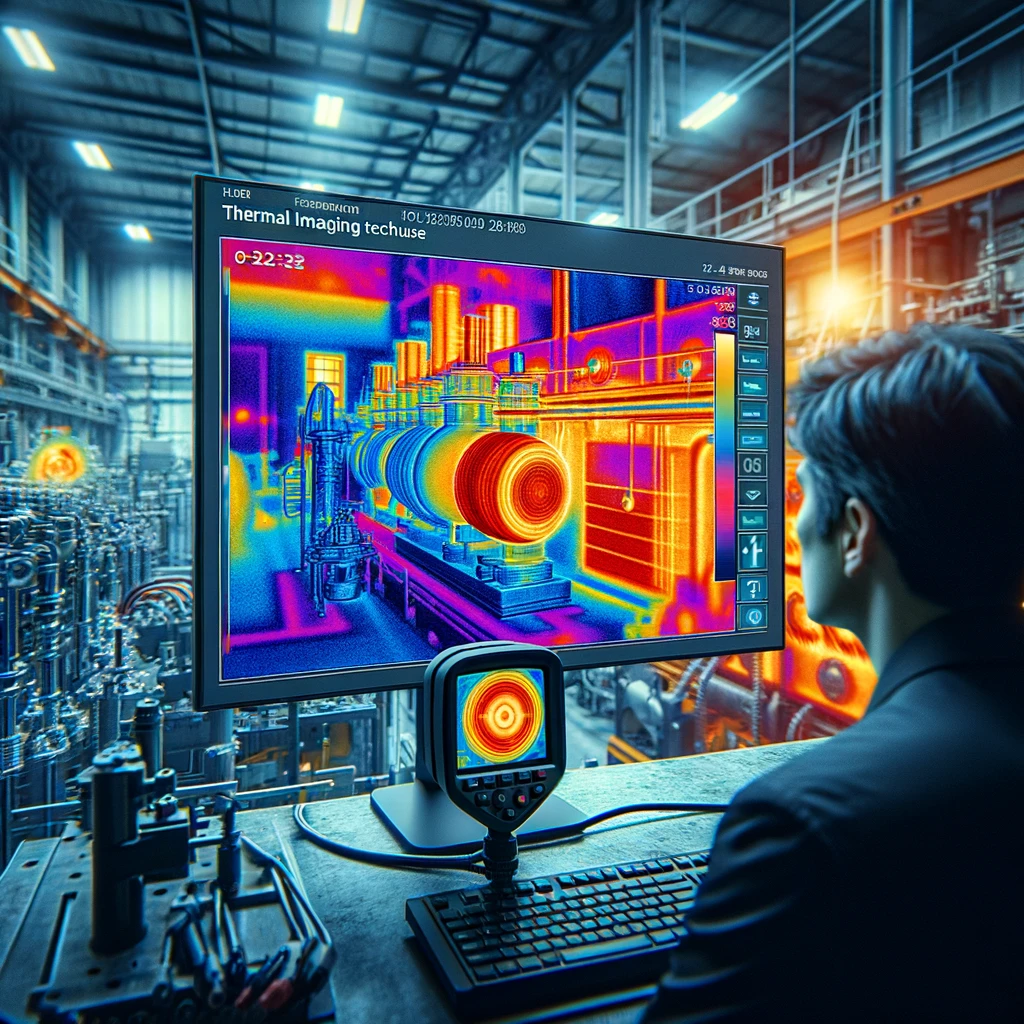
Continually evolving thermal imaging techniques open new possibilities for non-contact characterization, quality assurance, and predictive maintenance.
Calibration of thermal Sensors
To achieve repeatable precision and accuracy, industrial thermal sensors require periodic calibration against trusted standards. Mishandled calibrations lead to poor data quality and control. Best practices include:
- Perform initial sensor calibration at the time of commissioning using primary standards like thermometer baths or blackbody radiation sources able to achieve traceability.
- Follow manufacturer recommendations for calibration intervals based on sensor type, stability, drift, and criticality of application.
- Field calibration should use secondary standards calibrated to primary references. This avoids disruption of removing sensors.
- Document calibration methods, standards used, environmental conditions, technician, sensor positioning, date, and results. Keep detailed records.
- Apply consistent calibration procedures between intervals to reduce uncertainty.
- Check calibration over the entire operating range of the sensor, not just typical temperatures.
- Label sensors with calibration dates and due dates to ensure compliance with schedules.
- Analyze historical calibration data to identify unstable sensors requiring more frequent calibration or replacement.
Proper thermal sensor calibration protocols deliver reliable, consistent, and accurate temperature data essential for industrial processes and quality assurance.
Sensor Accuracy and Reliability
Obtaining accurate temperature measurements from industrial thermal sensors requires selecting proper sensor technologies and installing them correctly:
Sensor selection – Match the sensor type to variables like temperature range, media, speed of response, ruggedness, accuracy needs, and cost constraints. Avoid stretching sensor capabilities.
Calibration – Periodic calibration against trusted standards verifies accuracy and consistency over time.
Drift – Gradual drift due to aging, fatigue, contamination buildup, or corrosion should fall within acceptable limits between calibrations.
Interchangeability – Replacement sensors should perform closely to original specifications when periodically swapped out.
Environment – Avoid conditions like high vibration, moisture ingress, or chemical exposure that may degrade sensor performance.
Lead resistance – Long sensor lead wires add error due to lead resistance. Use proper wire gauge or signal conditioning to compensate.
Grounding – Ground all sensor bodies and housings to avoid static charges or noise pickup that corrupts signals.
Installation – Insert or contact sensors fully with the process medium being measured for good heat transfer. Insulate and protect cables.
Properly installing and maintaining suitable thermal sensors ensures reliable, consistent temperature data for ongoing process control and documentation.
Wireless thermal Sensing Systems
Wireless sensor networks provide a flexible, convenient alternative to troublesome wired installations:
- Faster installation – No need to run signal cables saves time and cost getting sensors online.
- Easy relocation – Sensors can be quickly moved as needs change without rewiring.
- Retrofitting – Wireless sensors work in places where cabling may be impossible like rotating equipment.
- Portability – Battery-powered wireless sensors enable remote monitoring of temperatures anywhere as needed.
- Dense networks – Large numbers of wireless sensors can monitor extensive areas or multiple points.
- Standardized networks – Mesh networking uses standardized protocols like WirelessHART for synergistic gains.
- Data accessibility – Wireless data feeds easily to control systems, cloud platforms, and mobile devices.
Data Analysis in Thermal Sensing
Advanced data analytics provide powerful new opportunities to extract value from thermal sensor data:
- Data logging – Local data acquisition systems or cloud platforms collect time-series temperature data from multiple sensors for centralized analysis.
- Visualization – Trend charts, histograms, heat maps, and other graphics rapidly convey sensor data insights.
- Automated reporting – Custom reports distributed by email or dashboards showcase relevant performance metrics.
- Modeling – Physics-based heat transfer models combined with ML techniques predict heating behavior for efficiency gains.
- Early fault detection – Algorithms automatically detect abnormalities like extreme temperatures and degraded control response.
- Predictive maintenance – Machine learning identifies rising temperatures, equipment degradation, and impending failures for repairs.
- Process optimization – Data mining uncovers correlations between product quality, energy use, thermal profiles, and process settings.
- Simulation – Digital twins of equipment and processes leverage sensor data for advanced simulation and virtual commissioning.
Thermal Sensor Maintenance and Longevity
Proper maintenance keeps industrial thermal sensors providing accurate, reliable data over years of demanding use:
- Follow manufacturer guidance on calibration intervals, cleaning methods, and periodic replacement.
- Visually inspect sensors and cables to identify damage from moisture, chemicals, or physical abuse.
- Check cables for deterioration like embrittlement or cracked insulation that creates electrical safety issues.
- Remove scale, oxidation, or chemical deposits from sensor tips to restore responsiveness and maintain integrity.
- Lubricate threads and seals on thermowells but avoid getting grease/oil on the actual sensor.
- Verify sensor grounding and continuity pathways have not become disconnected or corroded over time.
- Replace obsolete sensor technologies with modern equivalents for enhanced performance and connectivity.
- Analyze historical calibration data to identify unstable sensors requiring more frequent calibration or replacement.
Effective thermal sensor maintenance extends the operating life of equipment, avoids unplanned downtime, and maintains data reliability.
Safety Considerations in Thermal Sensing
Thermal sensing presents unique safety risks that require mitigation:
- Burn hazards – Hot surfaces associated with industrial heating can inflict serious burns. Warning labels and guards are essential.
- Fire hazards – Electrical faults in sensor wiring can ignite combustible materials. Use proper insulation ratings.
- Arc flashes – Grounding prevents voltage buildup that can arc across disconnected thermocouple junctions, spraying molten metal.
- Toxic materials – Avoid mercury thermometers. Follow proper exposure, ventilation, handling, and disposal protocols for other sensors.
- High voltages – Install surge protection for sensors integrated into heating element power circuits susceptible to overvoltage spikes.
- Calibration safety – Use caution when handling extreme temperature calibration sources to prevent burns.
- Electrical wiring codes – Follow all local regulations for industrial control panel and electrical design to mitigate shock and fire risks.
- Intrinsic safety – For flammable environments, ensure the sensor design will not produce sparks or excessive heat that could ignite vapors.
Understanding and designing for safety protects personnel and facilities when implementing thermal sensing for industrial applications.
Integration of Thermal Sensors with Automation Systems
Connecting thermal sensors with automation systems like PLCs and SCADA enables powerful optimization of heating processes through real-time monitoring, data collection, and closed-loop control:
- Analog I/O modules provide an easy, low-cost means of getting basic RTD or thermocouple data into a PLC.
- Digital networks like Ethernet, Modbus, and IO-Link allow the transmission of serial temperature data over long distances to controllers.
- OPC connectivity bridges between sensors from multiple vendors and data recording software through open industrial communication standards.
- Edge controllers built into the sensor enable the preprocessing and transmission of key data like alarms, min/max values, and averages to reduce network loads.
- Wireless integration streamlines deploying large sensor networks with standards like WirelessHART and ISA100 that interface directly with control systems.
- Cloud platforms accumulate massive sensor datasets while still allowing real-time automation system access as needed.
Seamless integration of thermal sensing with modern industrial automation maximizes data insights for optimizing heating processes and provides predictive capabilities.
Smart Control Systems for Heaters
Intelligent heater control systems leverage data from advanced thermal sensors for transformative efficiency and performance gains:
- Adaptive tuning – AI-enhanced PID algorithms self-adjust parameters in response to changing system dynamics learned from sensor feedback.
- Multivariable optimization – Interlinked temperature, flow, pressure, and power sensors allow dynamic optimization of heating efficiency.
- Predictive control – Model predictive control leverages equipment thermal models to forecast heating needs for feed-forward efficiency gains.
- Batch processing – Preprogrammed heating profiles matched to recipes minimize energy for repetitive batch operations.
- Closed-loop control – Direct sensor feedback enables precise cycling of heating elements and continuous self-correction.
- Plantwide coordination – SCADA integrates multiple heating zones, support equipment like pumps and valves, and utilities for synchronized optimization.
- Reliability focuses – Sensors identify rising temperatures, control deviations, and process upsets early to prevent heater damage.
By leveraging rich sensor data, smart heating control systems consistently achieve optimal temperatures while avoiding waste.
Innovations in Thermal Sensor Design
Advancements in materials, electronics, and manufacturing enable game-changing improvements in industrial thermal sensor designs:
- Microelectronic multi-sensor packages integrate temperature, flow, pressure, and other sensors together into tiny footprints.
- Chip-scale sensors built on silicon wafers using semiconductor manufacturing achieve remarkable space, performance, and cost breakthroughs.
- Direct digital outputs provide highly accurate temperature measurements without signal degradation from analog I/O.
- Miniature sensor heads allow insertion directly inside motors or heated spaces for responsive internal process measurements.
- Thin-film sensing elements offer minimal mass and maximized surface area for fast response times below 10 milliseconds.
- Flexible sensor substrates of graphene or polyimides enable tight integration on curved, moving surfaces like bearings or drums.
- Robust protective coatings like ceramics, diamond films, and silicon carbide preserve sensor function under extremely harsh environments.
- 3D printing allows the fabricating of specialized housings, probe shapes, microfluidics, and bimetallic elements bypassing traditional manufacturing limitations.
Cutting-edge design approaches are overcoming longstanding sensor technology barriers to provide unprecedented capabilities.
Challenges in High-Temperature Sensing
Measuring extreme temperatures reliably in harsh industrial environments poses multiple technological challenges:
- Sensor drift and degradation accelerate at high temperatures, requiring more frequent recalibration and replacement.
- Maintaining the mechanical integrity of probes and housings at high temperatures is difficult and constrains designs.
- Thermal shock during rapid temperature transients can damage delicate sensor elements. Gradual ramping of conditions helps.
- Radiation errors from surrounding heat sources can impact sensor readings. Reflective coatings and radiation shields help attenuate effects.
- Signal attenuation along cables increases at high temperatures, necessitating signal conditioning. Fiber optics avoid this issue.
- Cooling requirements for sensor electronics can drive complexity, cost, and physical size. New high-temperature electronics help greatly.
- Limited options – Most common sensor technologies have maximum operating temperatures under 300-500°C, restricting choices.
- Costs – Sensors for extreme temperatures often require specialized materials and processes, driving up costs.
High-temperature sensing pushes against constraints around materials properties, electronics, and signal fidelity while demanding designs robust enough for harsh environments.
Thermal Sensing in Harsh Environments
Challenging deployment environments demand thermal sensor designs engineered for resilience:
- Wet – Moisture can corrode connections and housing. Use hermetic seals and hydrophobic vent filters.
- Corrosive – Chemical vapors erode metals, doping, and insulation over time. Use corrosion-resistant alloys or protective coatings.
- High pressure – Thick housings designed without leaks are required for reliability.
- Flammable zones – Intrinsically safe sensors ensure no sparks or hot surfaces at all times.
- Moving – Vibration can fatigue sensors. Isolate with shock mounts.
- Cryogenic – Extreme cold requires special low-temperature electronics to avoid freezing up.
- Radiation – Gamma rays and neutron fluxes require radiation-hardened components and shielding.
- Vacuum – Non-vented, sealed sensors prevent outgassing and arcing in vacuum environments.
Proper material selection, housing design, and rigorous testing ensure thermal sensors provide lasting value even in the most aggressive industrial environments.
Case Study: Thermal Sensing in the Energy Sector
Power plants, refineries, drilling, and pipelines all leverage thermal sensing technology:
- Turbines – Hundreds of embedded thermocouples monitor blade, bearing, and steam temperatures for condition monitoring and safe operation.
- Reactors – Fiber optic sensors withstand intense radiation fields to measure nuclear fuel rod temperatures and prevent meltdowns.
- Wellheads – Regional wireless sensor networks monitor casing and permafrost temperatures to optimize drilling while preventing freeze-off.
- Transmission lines – Thermal cameras scan overhead power lines to identify hot spots and prevent sagging failures.
- Storage tanks – Wireless tank rim thermocouples with online corrosion models provide early warning of caustic damage breakthrough.
- Concentrated solar plants – High-accuracy pyrometers precisely track temperatures in collectors and absorbers to maximize thermal efficiency.
- Refineries – PC-based SCADA systems network thousands of critical process thermocouples and thermistors facility-wide.
Thermal sensing technology enables the oil, gas, and power sectors to operate safely, optimize processes, improve reliability, and prevent catastrophic failures.
Cost-Benefit Analysis of Advanced Thermal Sensors
Justifying investments in costly industrial sensing systems requires analyzing quantifiable financial benefits against expenses:
Benefits
- Reduced energy costs from optimized heating efficiency
- Minimized scrap and rework through quality consistency
- Increased uptime and production via predictive maintenance
- Improved product performance and validation
- Lower long-term sensor costs compared to replacements
Costs
- Sensor hardware procurement and spares
- Installation labor including training
- Integration programming and configuration
- Ongoing licensing fees for cloud analytics
- Maintenance labor including calibration
- Staff training and documentation
Comparing anticipated savings from reduced wastes, improved processes, and optimized production against total expenses provides an objective business case for funding advanced sensing projects. The cost-benefit analysis also guides design choices.
Future Trends in Thermal Sensing Technology
Several emerging technology trends will shape the future of industrial thermal sensing:
- Autonomous sensor networks powered by energy harvesting and machine learning will provide intelligent temperature monitoring and diagnostics.
- Low-cost multipoint MEMS sensors fabricated on silicon wafers will monitor thousands of points simultaneously.
- Advanced materials like graphene, gallium nitride, and nanocomposites will enable smaller, smarter sensors.
- Edge computing will allow real-time analytics and closed-loop optimization directly within sensors.
- Additive manufacturing will facilitate rapid customization of sensor designs for specific applications.
- Augmented reality will overlay digital thermal data onto real-world views for enhanced insights.
- Smartphone integration will provide access to thermal data anywhere and enable crowdsourced monitoring.
- Digital twins will create living models of facilities and processes fully linked to sensor data for simulation and control.
- Artificial intelligence will extract hidden insights, predict failures, and guide adaptive actions from thermal data.
- Millimeter wave wireless and LiFi will provide terabit-per-second sensor connectivity exceeding cables.
Environmental Impact of Efficient Heating
Optimizing industrial heating efficiency via advanced thermal sensing provides major environmental benefits:
- Lower greenhouse gas emissions from reduced fossil fuel consumption and smarter electrical load management
- Decreased air pollutants like nitrogen oxides, sulfur dioxide, and particulates from more efficient combustion
- Reduced thermal pollution of rivers and lakes by minimizing the discharge of waste heat
- Lower environmental compliance costs for air emissions monitoring, reporting, and pollution controls
- Less fuel mining and drilling impacts by decreasing overall energy demand
- Enhanced sustainability from extending fossil fuel supplies further into the transition to renewables
- More efficient land usage when legacy heating systems are retrofitted rather than replaced
- Reduced grid strain by optimizing loads and peak demands on utility generation assets
Effective thermal management is crucial for both industry profitability and minimizing the environmental footprint of manufacturing.
Regulatory Standards for Thermal Sensors
Stringent quality standards ensure industrial thermal sensors provide accurate, reliable data and integrate safely:
- Measurement standards like IEC 60584-1 set rigorous limits on thermocouple fabrication materials and tolerances.
- Hazardous areas – Globally harmonized standards like IECEx and ATEX certify electrical equipment safety for explosive atmospheres.
- Safety integrity levels (SIL) – Standards like IEC 61508 verify sensors meet probabilistic safety metric targets for hazard mitigation.
- Guidelines for implementation – ISA documents like ANSI/ISA-dS67.04.01 guide proper installation and usage of thermowells.
- Cybersecurity – IEC 62443 defines procedures and requirements for secure industrial automation and networking.
- Electrical testing – Dielectric, insulation resistance, and voltage withstand testing to screen for manufacturing defects.
- Shock and vibration – MIL-STD-810 shows equipment ruggedness for extreme transportation and operation conditions.
With advanced technology come strict controls to ensure high product quality, workplace safety, and integrity against modern threats like hacking.
Training and Skills Development in Thermal Sensing
Optimizing today’s data-intensive, networked thermal sensors requires blending sensor expertise with data science and connectivity skills:
- Sensor technology – Selection, installation, maintenance, and calibration best practices for thermal sensor hardware
- Data acquisition – Configuring hardware and software for reliable, secure sensor data collection
- Data quality – Recognizing and addressing missing data, noise, calibration errors, or data synchronization issues
- Data analysis – Applying statistics, modeling, machine learning, and visualization to extract useful information from massive thermal datasets
- Automation integration – Using communication protocols like OPC UA, MQTT, and REST to transmit sensor data to control systems
- IoT architecture – Designing sensor connectivity into plantwide information systems and cloud platforms
- Cybersecurity – Hardening sensor data collection and transmission pathways against intrusions or manipulation
- Technical training – Interpreting equipment thermal profiles and control response to identify optimization opportunities
Cross-disciplinary thermal sensing expertise combining operational, information technology, and data analytics skills is key to maximizing the value of sensor investments.
Customization of Thermal Sensors for Specific Applications
While many generic sensor products exist, custom-engineering delivers superior performance in challenging applications:
- Sensor elements can be selected or developed to perfectly match needed temperature ranges, materials compatibility, and accuracy specifications.
- Housings can be uniquely shaped to fit tight spaces and optimized for ruggedness and protection in a given environment.
- Wiring and cabling can be application-specific lengths and gauges with unique connectors or termination.
- Electronics can provide custom amplification, filtering, diagnostics, and signal processing tailored for an application.
- Data formatting can be specially configured for compatibility with proprietary control systems and data historians.
- Calibration procedures can be defined around an application’s accuracy requirements, equipment, and traceability needs.
- Testing procedures can focus on confirming operation after exposure to application-specific temperature cycling, vibration, chemicals, and other conditions.
- Documentation can provide installation, maintenance, and troubleshooting instructions focused on a single application scenario.
- Inventory management can be simplified by stocking fewer application-specific designs rather than many generic variants.
While requiring greater upfront engineering effort, custom thermal sensors can lower lifetime costs and improve performance.
The Impact of Thermal Sensing on Product Quality
Thermal data provides invaluable insights into manufacturing quality:
- Monitoring process temperatures identifies deviations from ideal heating profiles that lead to defects.
- Tracking the thermal history of batches or items provides quality assurance documentation to customers.
- Early detection of heating element failures or uneven temperatures prevents product inconsistencies.
- Correlating thermal data to quality metrics like scrap rates helps optimize processes.
- Validating equipment heating performance as part of maintenance prevents deterioration of processing capabilities over time.
- Improved reproducibility of thermal cycles reduces product variability and rework.
- Real-time thermal monitoring of critical processing parameters enables rapid notification of any excursions.
- Heating optimization guided by thermal sensing minimizes detrimental microstructural changes in materials.
- Thermal inspection systems rapidly verify product assembly or cook quality on manufacturing lines.
Overall, thermal data elevates process oversight, control, and predictability – driving improved product uniformity, performance, and reliability.
Improving Heater Lifespan with Advanced Sensing
By enabling smarter control and predictive maintenance, thermal sensors help extend heater lifespan:
- Tight temperature regulation avoids overheating damage like element burnout or alloy grain growth.
- Gradual ramping based on continuous monitoring prevents thermal shock cracking.
- Early identification of blocked vents or airflow issues prevents overheating failures.
- Abnormal hot spot detection facilitates timely repairs before failures occur.
- Detection of temperature fluctuations or spikes indicates power supply problems requiring maintenance.
- Monitoring control response identifies bad actors like failing relays before causing damage.
- Trending output temperatures spot declining performance indicating fouled or worn-out elements.
- Tracking total elements on time and cycles facilitates age-based preventive replacement.
- Real-time diagnostics allow preemptively tuning control loops as equipment ages.
- Verifying even heating prevents local hot spots from degrading insulation or refractory linings prematurely.
Intelligently leveraging thermal sensor data maximizes heater longevity, averting premature breakdowns or loss of performance.
The Intersection of Thermal Sensing and AI
Artificial intelligence is revolutionizing thermal sensing, providing unprecedented analytics and insights:
- Machine learning algorithms discern subtle temperature patterns from massive historical data to optimize efficiency.
- Predictive modeling foresees heating loads and proactively tunes equipment for optimal response.
- Deep learning neural nets extract hidden correlations between product quality, thermal profiles, and process parameters.
- Smart sensors with embedded electronics run onboard diagnostics and preprocessing to filter data.
- Edge computing enables real-time optimization right at the sensor using AI chips.
- Heating digital twins mirror equipment thermal behavior through physics-based models refined by sensor data.
- Computer vision adds an additional sensing modality by automatically analyzing thermal camera imagery.
- Adaptive control uses reinforcement learning to dynamically retune heating processes based on thermal feedback.
- Virtual sensing replaces physical sensors with AI models correlating data from surrounding sensors.
- Prescriptive analytics recommend specific heating parameter adjustments to optimize efficiency and quality.
Real-Time Monitoring and Control of Heaters
Continuous thermal monitoring paired with responsive control mechanisms optimizes heating efficiency:
- Fast-response sensors like thin-film thermocouples provide temperature feedback in milliseconds.
- PID controllers continuously recalculate required power based on deviation from setpoints.
- Pulse-width modulation rapidly cycles heater elements to maintain precise average power.
- Automated alerts instantly notify personnel of any process deviations or upsets based on monitoring.
- Predictive preheating uses thermal models to start heating in advance to reach the setpoint just as needed.
- Feed-forward control adapts heater power based on measured upstream temperature changes before process impact.
- Cascade control coordinates temperature with related parameters like flows and pressures using interlocked control loops.
- SCADA integration optimizes heating holistically across entire production lines or facilities.
Exploiting real-time sensor data through automated analytics and controls maximizes heating consistency, efficiency, and uptime.
Advanced Algorithms in Thermal Sensing
Sophisticated algorithms extract deeper insights from thermal sensor data:
- Adaptive tuning uses machine learning to continuously refine control parameters in response to changing system dynamics.
- Sensor fusion combines temperature data from multiple types of sensors using probabilistic weighting for increased accuracy.
- Supervisory control oversees local PID loops and globally optimizes their setpoints and gains based on broader operational goals.
- Trigonometric fittings accurately smooth noisy thermal cycles to expose underlying trends.
- Fast Fourier transforms identify dominant frequencies in fluctuating thermal processes critical for tuning response.
- Principal component analysis reveals the combinations of process factors explaining the most variance in heating to prioritize.
- Partial least squares regression correlates heating inputs to quality metrics, revealing the drivers of defects.
- Classification algorithms cluster products based on thermal history to identify good and bad batches without labeling.
- Simulations check controller improvements virtually to accelerate optimization and enhance safety.
Advanced analytics provide the deeper insights needed to perfect highly nuanced, ever-changing thermal processes.
User Interface Design for Thermal Sensing Systems
Well-designed user interfaces are crucial for extracting maximum value from thermal data:
- Intuitive navigation allows operators to easily access desired data views without hunting or confusion.
- Touchscreen HMIs streamline interaction with thermal controllers and data through familiar gestures like taps, swipes, and pinch/zoom.
- Responsive displays ensure critical thermal graphics remain readable on diverse desktop, mobile, and wearable displays.
- Interactive charts empower analysts to drill down into massive historical data by zooming, hovering, filtering, and querying graph points.
- Customizable dashboards present personalized graphics tuned to each user’s specific roles and interests.
- Animated process graphics bring static P&IDs to life by overlaying dynamic sensor data like temperatures.
- Augmented reality views blend digital thermal data into physical equipment views for enhanced contextual insights during troubleshooting.
- Notifications and alerts prominently yet unobtrusively notify users about threshold violations or anomalies requiring attention.
- Role-based access presents relevant controls and thermal data to users according to their responsibilities and competencies.
Well-designed interfaces amplify the power of thermal data for enhanced process oversight, optimization, and reliability.
Case Study: Automotive Industry and Thermal Sensing
Automotive manufacturing relies heavily on thermal monitoring for quality and efficiency:
- Infrared cameras control heating uniformity in paint drying ovens, avoiding defects.
- Die casting machines embed thermocouples to regulate metal temperature, viscosity, and mold cooling.
- Inline thermocouples ensure even curing of adhesives during glass bonding processes.
- Wireless thermocouple arrays inserted in test engines map combustion temperatures under dynamic conditions.
- Temperature transmitters help optimize injection molding by minimizing deviations from melt temperature setpoints.
- Forging presses network high-speed infrared sensors together to fine-tune mechanical heating uniformity.
- Battery manufacturing uses distributed fiber optic sensing to maintain tight temperature control and prevent thermal runaway across large racks.
Thermal sensing technology enables automotive manufacturing innovations, product quality, and efficiency.
Energy Conservation Strategies in Thermal Sensing
Several approaches help maximize industrial energy savings enabled by thermal sensing:
- Perform regular energy audits to identify the greatest heating efficiency opportunities across facilities.
- Establish energy baselines using metering so savings from efficiency gains can be quantified.
- Use advanced process controls like model predictive control to dynamically optimize heating setpoints and cycles.
- Schedule automated weekly and seasonal setbacks during non-production hours to reduce idling losses.
- Sequence and stagger operations to minimize concurrent heating loads through production planning.
- Specify high-efficiency heating elements and properly sized equipment to avoid waste from overcapacity.
- Insulate sensitive components like valves and flanges to reduce supplementary trace heating demands.
- Continually monitor energy performance indicators like BTUs/unit to sustain savings.
A holistic strategy encompassing equipment, data analytics, and operational best practices maximizes the energy and cost savings realized from thermal optimization.
Thermal Sensing in Aerospace Applications
Aviation and space systems rely extensively on thermal sensing technologies:
- Aircraft embed thousands of wired and wireless thermocouples to monitor turbine, environmental system, and braking temperatures in flight.
- Cryogenic fuel systems utilize specialized ultra-low temperature sensors to maintain proper liquefied gas conditions.
- Wind tunnels employ nanoscale thin-film thermal sensors to map boundary layer airflow dynamics without disrupting them.
- Rocket engines use ruggedized platinum RTDs and thermocouples to monitor combustion chamber and nozzle temperatures exceeding 5500°F.
- Spacecraft contain non-contact infrared sensors to monitor equipment temperatures in the extreme cold of space.
- Hypersonic vehicles leverage advanced fiber optic networks that withstand intense heating during Mach 15+ flights.
- Satellites utilize MEMS and solid-state electronic sensors robust to extreme vibration, radiation, and temperature swings in orbit.
Without precision thermal sensing, the extreme speed, temperature, and reliability needs of aerospace systems could never be achieved.
The Role of Thermal Sensing in Predictive Maintenance
Continuously monitoring equipment temperatures enables transformative predictive maintenance:
- Early anomaly detection – Abnormal hot spots or spikes compared to baselines indicate impending failures.
- Degradation tracking – Gradual temperature changes show a loss of cooling efficiency or increased friction from wear.
- Lifecycle analysis – Heater elements can be replaced preemptively based on accumulated time rather than waiting for burnout.
- Resource optimization – Maintenance is scheduled intelligently based on actual needs, not arbitrary calendars.
- Root cause identification – Thermal patterns help diagnose failure modes to address underlying issues.
- Product development – Operational sensor data guides design improvements increasing ruggedness and longevity.
- Risk mitigation – Developing problems prompt controlled shutdowns rather than catastrophic failures.
- Reduced downtime – Smooth operations continue with scheduled maintenance rather than disruptive breaks.
Thermal sensing delivers the critical data needed for predictive maintenance – maximizing uptime, reducing costs, and boosting performance.
Enhancing Process Efficiency with Thermal Sensors
Thermal sensing optimizes efficiency in multiple ways:
- Faster heating – Precise monitoring enables aggressive ramp rates without overshooting.
- Lower overshoot – Tight control prevents overheating beyond setpoints.
- Accelerated startup – Rapid sensor feedback allows safely pushing equipment to thresholds.
- Optimized batch timing – Monitoring verifies when true process completion occurs, minimizing cycle times.
- Reduced defects – Detecting thermal deviations quickly prevents additional waste.
- Load leveling – Monitoring energy usage enables intelligent scheduling to flatten peak demands.
- Reduced safety margins – Confident temperature control allows narrowing guardbands.
- Automated optimization – Closed-loop systems self-adjust to maximize efficiency in real time.
- Energy savings – Efficiency gains directly reduce fossil fuel and electrical consumption.
- Waste heat recovery – Detailed thermal mapping guides capturing rejected heat for reuse.
Overcoming Technical Challenges in Thermal Sensing
Clever techniques help overcome common thermal sensing difficulties:
- Galvanic isolators and ground loops break grounding issues causing measurement errors.
- Thermowells and armor protect sensors from corrosion, abrasion, and vibration.
- Differential measurements with compensation wires mitigate errors from lead resistance.
- Noise filters, shielding, and signal conditioners clean up corrupted sensor signals.
- Wireless sensors avoid problematic cable runs and penetration sealing issues.
- Thermal pastes enhance contact between irregular surfaces and sensors.
- Dual-element sensors combining thermocouples and RTDs provide self-validating measurements.
- Thermal modeling guides optimal placement and configuration for accurate, responsive data.
- Standards associations and committee participation drive continued innovation and education.
With insight and the right tools, plants can overcome nearly any thermal sensing obstacle they face.
The Economics of Implementing Thermal Sensing Solutions
Financial factors drive industrial thermal sensing implementations:
- Energy savings – Optimizing heating efficiency provides direct savings proportional to fossil fuel and electricity usage.
- Increased throughput – Faster startup and cycles boost production volume.
- Reduced downtime – Predictive maintenance and removal of wiring cuts unplanned outages.
- Improved product quality – Precise thermal control minimizes rejects and rework.
- Regulatory compliance – Audit trails document proper heating protocols.
- Modernization – Upgrading enables additional improvements like remote monitoring.
- Competitive pressures – Rivals’ efficiency and quality gains necessitate keeping pace.
A strong return on investment makes upgrading to modern thermal sensing attractive for both operations and management at manufacturers.
Innovations in Heat Transfer Analysis
Advancing thermal sensor capabilities parallel progress in heat transfer research:
- High-resolution thermal imaging reveals multidimensional heat flow unseen by single-point sensors.
- Detailed computational fluid dynamics simulations model precise heat transfer behavior for design optimization.
- Customized metamaterial surfaces passively enhance heat conduction, spreading, or isolation in novel ways.
- Nanoscale thermocouples and microcalorimeter arrays enable probing heat transfer mechanisms at the atomic scale.
- Quantum thermal sensing schemes measure temperature fluctuations smaller than one-millionth of a degree.
- Picosecond photothermal metrology characterizes ultrafast heating and cooling transients in next-generation electronics materials.
- Scanning thermal microscopy maps nanometer-scale hot spots and thermal diffusion effects within integrated circuits.
- Biophotonic thermal sensors exploit mid-infrared bio fluorescence for noninvasive subsurface tissue measurements.
Cutting-edge innovations in thermal metrology are continually unlocking new realms of heat transfer science and engineering knowledge.
Thermal Sensing for Safety and Security
Thermal sensors help mitigate risks in public spaces and critical infrastructure:
- Fire detection – Thermal imagers quickly detect hotspots in walls and ceilings that precede flaming ignition.
- Flood monitoring – Temperature cable arrays installed in dams track water seepages to prevent failures.
- Pipeline leak detection – Sensitive MEMS sensor strings look for temperature drops indicating fuel leakage.
- Hazardous materials – Wireless sensor networks surround storage sites, tracing vapor dispersal in emergencies.
- Perimeter monitoring – Fence-mounted IR cameras can automatically detect trespassers at night.
- Elevator safety – Thermal overload monitoring of winch motors prevents dangerous stuck failures.
- Data center cooling – Extensive thermal mapping guides efficient air conditioning for vital servers.
- Aerospace health monitoring – Distributed internal temperature sensors detect overheating damage or fires during flight.
Thermal sensing acts as an extra layer of protection for public and industrial safety.
Role of Thermal Sensing in Sustainable Manufacturing
Thermal sensing supports multiple sustainability goals:
- Energy efficiency – Optimized heating reduces fossil fuel demands.
- Emissions reductions – Minimizing fuel use decreases greenhouse gases and air pollutants.
- Waste reduction – Precision temperature control minimizes scrapped material.
- Water conservation – Leak detection and pipe condition monitors prevent losses.
- Recycle/reuse – Thermal characterization helps incorporate recycled materials.
- Renewable energy – Thermal sensors maximize the efficiency of solar collectors and geothermal wells.
- Green chemistry – Thermal analysis helps design processes avoiding toxic materials.
- Combustion optimization – Monitoring enables operating burners for minimal byproducts like NOx.
- Employee safety – Thermal alerts prevent injuries from extreme process temperatures.
- Regulatory compliance – Thermal recordkeeping documents environmentally sound operation.
Impact of Thermal Sensing on Operational Costs
Thermal monitoring provides measurable cost savings:
- Energy – Optimized heating efficiency directly reduces power and fuel costs.
- Maintenance – Advanced notice of impending failures from thermal data minimizes downtime.
- Labor – Automated optimization and quality control reduce manual oversight needs.
- Waste – Tighter temperature control minimizes discarded defective production runs and rework.
- Safety – Thermal monitoring and alerts help avoid injuries that incur major costs.
- Inventory – Just-in-time heating enabled by monitoring reduces work-in-process.
- Compliance – Documented proper heating shows regulatory due diligence.
- Insurance – Demonstrated preventive measures lower premiums.
Industrial thermal sensing delivers an attractive return on investment by lowering expenses in multiple categories.
Case Study: Thermal Sensing in Chemical Processing
Chemical production relies on thermal sensing for efficiency and safety:
- Monitoring reactor wall and liquid temperatures allows for maximizing yield while preventing runaway reactions.
- Precise control of distillation columns using RTD arrays optimizes separation efficiency and purity.
- Fiber optic hydrophones connected to pipeline exteriors listen for leaks based on small temperature drops.
- Thermal imaging of rotating kilns ensures uniform heating and material mixing.
- Tracking bearings on conveyors and mixers for rising temperatures provides early warning of failures.
- Wireless battery temperature monitors prevent thermal runaway and explosions during charging.
- Cryogenic sensors maintain strict temperature regulation for superconducting electromagnets in NMR spectroscopy.
Thermal sensing is indispensable for safely controlling the extreme temperatures and precisely timed heating steps inherent to chemical processes.
Best Practices in Thermal Sensor Installation
Proper installation practices ensure quality thermal measurements:
- Position sensors to avoid radiant sources that cause false readings. Use radiation shields if needed.
- Thermowells allow replacing sensors without process shutdowns.
- Apply thermal grease/epoxy for good contact between rough surfaces.
- Power and signal wires should be separated to avoid crosstalk.
- Wire lengths should be minimized. Use shielded, twisted pairs to reduce noise pickup.
- Calibrate all transmitters and analog I/O after installation.
- Check for unstable mounting or vibration issues that may degrade sensor readings or lifespan.
- Set data acquisition system scanning rates to match sensor response times. More frequent scanning adds noise.
- Label and document all sensor locations and wiring for maintenance and future modifications.
Following best practice installation guidelines yields reliable, accurate data from industrial thermal sensing systems over their operational lifetimes.
Impact of Material Properties on Thermal Sensing
The properties of materials strongly influence thermal sensing needs, options, and outcomes:
- Thermal conductivity – Highly conductive materials require densely spaced sensors to detect internal temperature gradients.
- Malleability – Ductile materials must have sensors with flexible leads or wireless configurations to tolerate movement.
- Chemical reactivity – Sensors measuring corrosive materials need inert construction like ceramic or glass.
- Phase changes – Monitoring state changes requires fast-response sensors to capture transient behavior.
- Emissivity – Low infrared emissivity materials need surface coatings or alternative contact sensors.
- Opacity – Opaque media prevent internal visualization, necessitating multiple external sensors.
- Heat capacity – High-heat capacity samples require longer heating times before sensing equilibrium temperatures.
- Thermal expansion – CTE mismatch between samples and sensors introduces mechanical stress and distortions.
- Magnetic properties – Ferromagnetic materials distort magnetic thermocouples, requiring alternative sensors.
Understanding how material attributes affect thermal sensing enables designing installations for maximum accuracy, response, and longevity.
Advanced Data Visualization in Thermal Sensing
Innovative graphics maximize insights from massive thermal datasets:
- Animated heat maps of equipment show real-time heating variations for diagnostics.
- Clickable data trees allow instant filtering of thousands of sensors into logical groups.
- Augmented reality overlays precise thermal data on physical assets for enhanced troubleshooting.
- Multivariate trend charts compare temperature with related pressure, flow, and vibration data.
- Interactive 3D models enable slicing through digital twin representations to expose internal thermal gradients.
- Rotating perspective 3D graphs reveal spatial relationships between hundreds of measurement points.
- Animated temperature histograms illustrate heating variations for a process over time.
- Colorized production floor maps dynamically display sensor temperatures across an entire plant.
- Virtual reality immersive experiences let engineers figuratively walk through and interact with 3D thermal data.
Powerful data visualization enables unprecedented insights from large-scale industrial thermal sensing networks.
Remote Access and Control of Thermal Sensors
Connectivity enables managing thermal sensors from anywhere:
- Browser-based SCADA dashboards give real-time temperatures on any computer.
- Live video feeds check site conditions when receiving abnormal sensor alerts remotely.
- Secure VPN connections allow remote troubleshooting and diagnostic testing of suspected issues.
- Triggered data downloads transfer logging history to the cloud during failures for post-event analysis.
- Two-way audio communication lets specialists talk operators through repairs.
- Remote desktop control enables offsite personnel to access and modify controller parameters.
- Email and text alerts notify personnel of significant sensor events.
- Electronic operator rounds collect temperature readings remotely.
- Digital twin simulations facilitate testing control improvements virtually before deployment.
- Cloud data enables ML-driven predictive algorithms to run 24/7 identifying impending failures.
Remote thermal sensor access enables proactive diagnostics, instant collaboration, and global optimization.
The Future of Nanotechnology in Thermal Sensing
Nanoscale fabrication promises continued thermal sensing advances:
- Carbon nanotubes, graphene, and nanowires enable smaller, faster, and more sensitive chip-scale sensors.
- High surface area nanoporous films provide rapid response combined with physical robustness.
- Quantum dots and fluorescent nanoparticles improve temperature precision down to microdegrees.
- Metamaterials with designed nanoscale features manipulate thermal emission and isolation in new ways.
- Nanoscale thermocouples and tunnel junctions probe heat transfer physics at atomic scales.
- Lab-on-a-chip devices integrate microscale sensors, heaters, and control electronics together.
- Bottom-up self-assembly and directed nanocrystal growth produce new sensing materials.
- Nanomolding and imprinting produce microsensor arrays spanning large areas or curved surfaces.
- Quantum thermal sensing exploits nanoscale phonon propagation effects for extreme precision.
Nanofabrication drives continued innovation in industrial thermal sensing technology, sensitivity, and integration.
Thermal Sensing in Renewable Energy Systems
Renewable energy production depends on thermal monitoring:
- Solar fields use distributed IR imaging to pinpoint faulty mirrors and pipes needing realignment.
- Solar cells and films embed wireless thin-film sensors to study failures and degradation.
- Geothermal sensors in wells optimize fluid injection rates and track fractures by mapping subsurface gradients.
- Hydroelectric dams employ sensor arrays to detect seepages and structural issues through minute temperature changes.
- Tidal generators utilize marine thermocouple sensor chains to ensure optimal operating conditions.
- Nuclear reactors contain fiber optic networks to monitor containment vessels and fuel temperatures.
- Hydrogen infrastructure monitors storage tanks and fuel lines for safety.
- Biofuel reactors maintain precise thermal control for optimal yield.
- Wind turbines track bearing and generator temperatures using wireless sensor nodes.
- Waste-heat capture systems use thermal imaging to target untapped heat sources.
The Role of Thermal Sensing in Quality Assurance
Thermal data is invaluable for quality assurance and control:
- Monitor key process temperatures continuously for excursions from ideal heating profiles.
- Correlate product quality metrics like scrap rates back to thermal history data to optimize processes.
- Perform sampling checks of actual product temperatures during manufacturing for consistency.
- Review thermal history logs to confirm proper heating protocol adherence for entire batches.
- Use in-line thermal sensors to actively adjust processes in real-time if readings deviate.
- Detect heating element faults quickly based on abnormal temperature distributions.
- Compare thermal images of sample products against known good examples to identify defects.
- Inspect thermally sensitive materials like explosives regularly for signs of dangerous decomposition.
- Screen incoming feedstock with thermal sensors to identify moisture or composition issues.
- Validate equipment performance regularly by testing with thermocouples over the operating range.
Comprehensive thermal monitoring and analysis ensures consistent production quality and identifies improvement opportunities.
Challenges in Integrating Thermal Sensors with Existing Systems
Upgrading thermal sensing in legacy plants brings integration challenges:
- Interfacing modern digital sensor signals with older analog control systems.
- Limited I/O capacity necessitates adding expansion modules or additional controllers.
- Running communication cables through congested cable trays or conduits.
- Finding spare power in an overloaded MCC to add new sensors.
- Insufficient panel space to mount new signal conditioners and power supplies.
- Adding data collection servers and storage for high-volume sensor data flows.
- Keeping documentation updated across control system revisions.
- Validation and requalification if sensors are added to FDA or ISO-regulated processes.
- Training operators on new data visualization and analytic software.
- Cybersecurity analyses to identify new potential attacks from increased connectivity.
- Legacy equipment limitations that constrain full optimization of new thermal capabilities.
With planning and creativity, existing infrastructure constraints can be overcome to realize advanced thermal sensing benefits.
Emerging Markets for Thermal Sensing Technologies
Diverse industries are adopting thermal sensing:
- Smart buildings optimize HVAC efficiency by creating 3D temperature maps for hot and cold spot elimination.
- Data centers use underwater thermocouple grids to guide cooling systems for server racks generating intense heat.
- Smart cities install distributed thermal sensors within streetlights for security, traffic monitoring, and weather forecasting.
- Indoor agriculture leverages IR imaging to meticulously control growing environments and maximize crop quality.
- Water distribution places MEMS sensor beads underground to detect leaks by soil moisture changes.
- Autonomous vehicles fuse lidar, thermal cameras, and short-range IR sensors for robust navigation capabilities.
- Mobile devices embed flexible microscale thermopiles and biophotonic sensors for fitness and health tracking.
- Supply chain RFID temperature loggers track produce, chemicals, and pharmaceuticals in transit.
- Utilities use real-time customer smart meter data to dynamically control and reroute the grid for efficiency.
- Space exploration relies on rugged MEMS sensor networks to map terrain and subsurface heat flow for rovers and landers.
Intellectual Property and Patents in Thermal Sensing
Vigorous patent activity shows intense innovation in thermal sensing:
- Honeywell has patents on mobile device flexible thin-film thermopile sensors for fitness and healthcare.
- Google holds patents on neural network data processing for optimizing building HVAC equipment using distributed temperature sensors.
- Samsung has patented augmented reality devices that overlay real-time thermal imaging into users’ view for industrial maintenance.
- Analog Devices owns patents on contactless, optical thermopile sensors for IoT and industrial applications.
- IBM has patented tiny MEMS differential thermocouple sensor arrays for chip-scale temperature measurements.
- Qualcomm patented smartphone-enabled wireless sensor networks for crowdsourced urban temperature mapping.
- Ford owns patents on in-vehicle occupant skin temperature monitoring via infrared sensors to personalize HVAC delivery and detect drowsiness.
- ExxonMobil patented piping acoustic leak detection systems that identify leaks based on passing fluid temperature differentials.
Active patenting illustrates the competitive value of thermal sensing innovations and the rapid pace of advancement across industries.
Training Workforce for Advanced Thermal Sensing Technologies
Next-generation thermal sensing demands blended skills:
- Sensor selection, installation, maintenance, and integration
- Data acquisition, quality assurance, security, storage, and transmission
- Analytics including statistics, modeling, machine learning, and AI
- Control systems, instrumentation, and mechatronic systems integration
- IoT networking, edge computing, and digital twin integration
- Mobile technology, augmented reality, and user experience design
- Additive manufacturing and custom sensor fabrication techniques
- Materials science including nanomaterials, metamaterials, and coatings
- Multivariate testing and design of experiments
With thermal sensing rapidly advancing, education must evolve to provide industry the specialized cross-disciplinary expertise needed.
Conclusion: The Future of Heater Efficiency and Control
This deep dive into thermal sensing technology, applications, and trends illustrates the pivotal role temperature measurement and control play in driving efficiency, quality, and process improvements across industrial heating processes. With innovations in sensing hardware, connectivity, analytics, and integration accelerating, organizations can cost-effectively upgrade aging thermal monitoring infrastructure to leverage real-time data insights, system integration, and automation advances that minimize costs and strengthen competitiveness. The future points toward a new paradigm empowering smarter and more responsive heating systems through the convergence of sensors, data science, and automation.


